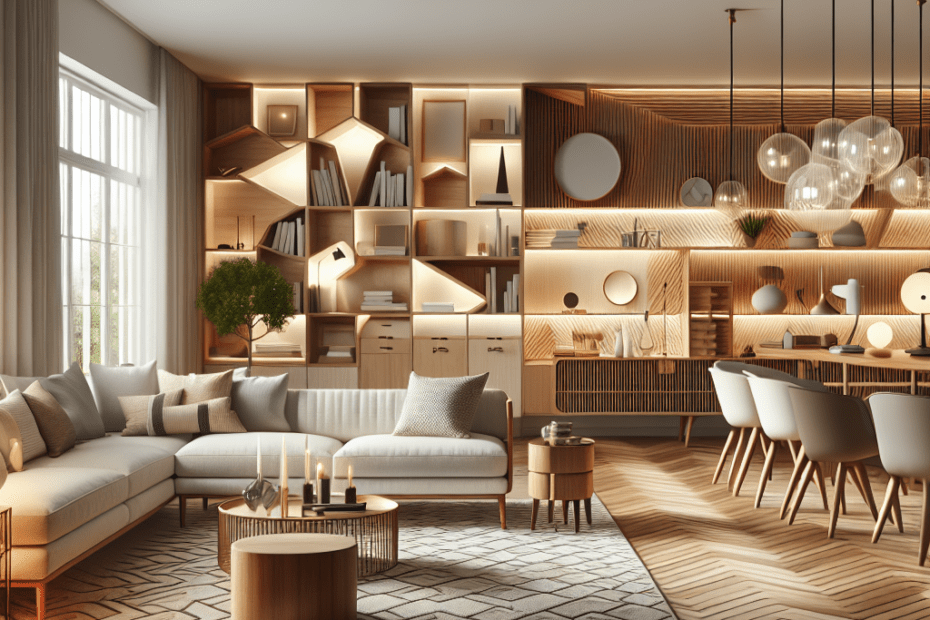The Essentials of Layered Lighting in Mid-Century Modern Homes
Mid-century modern homes, known for their sleek lines, functional elements, and integration with nature, have become a beloved architectural style. A crucial aspect of these homes is how they use lighting to amplify their aesthetics and functionality. They achieve this through layered lighting, a strategic approach that blends ambient, task, and accent lighting to create a balanced and inviting atmosphere.
Understanding Layered Lighting in Mid-Century Design
Layered lighting involves using different types of lighting to serve various purposes in a single room. They typically include ambient, task, and accent lighting, each contributing unique benefits:
- Ambient Lighting: This is the foundational light source, providing general illumination. In mid-century modern homes, they might use pendant lights or recessed lighting as ambient sources, ensuring the space is well-lit.
- Task Lighting: This lighting is more focused, intended for activities like reading, cooking, or working. Adjustable floor lamps or desk lamps are quintessential choices for these tasks.
- Accent Lighting: Often used to highlight architectural features or artwork. Wall sconces and track lighting can be ideal for drawing attention to paintings or sculptures within the home.
The Importance of Layered Lighting in Mid-Century Modern Homes
While mid-century design embraces natural light with large windows and open spaces, artificial lighting plays a vital role too. They use layered lighting to add depth, dimension, and warmth to their interiors, making them not just functional but also comfortable and visually appealing.
Statistics show that around 49% of homeowners consider lighting design crucial when renovating their homes, indicating its impact on the overall feel and function of a space (Source: Home Improvement Research Institute, 2022). For mid-century modern homes, where the charm lies in simplicity and elegance, the right lighting can emphasize clean lines and natural elements, reinforcing the home’s architectural beauty.
Practical Steps to Implement Layered Lighting
To achieve this balanced lighting, they should consider the following steps:
| Step | Action | Details |
|---|---|---|
| 1 | Plan Lighting Placement | Consider the role of each room and where natural light enters. Use a mix of lighting types to ensure even distribution throughout. |
| 2 | Select Fixtures | Choose fixtures that complement mid-century design, like sleek, minimalistic floor or pendants lights. |
| 3 | Layer Lighting Types | Combine ambient, task, and accent lighting strategically in each room to create a balanced atmosphere. |
| 4 | Install Dimmers | Dimmers allow for flexibility, helping adjust the lighting to suit different times of day and activities. |
| 5 | Focus on Functionality | Ensure each light serves a purpose, enhancing the room’s functionality and aesthetic. |
Mid-Century Modern Fixtures: A Fusion of Style and Function
Mid-century fixtures combine style with function. They often choose materials like brass, chrome, or glass and opt for geometric shapes. Whether it’s a Sputnik chandelier or an Arco lamp, the fixtures themselves can be considered art pieces, enhancing the room’s decor while providing essential light.
Benefits of Layered Lighting in Mid-Century Design
Layered lighting in mid-century design not only enhances aesthetics but also contributes to practical advantages:
- Flexibility: Different light sources allow adjustments to lighting based on needs and time of day.
- Increased Comfort: Proper lighting reduces eye strain and creates a cozy environment.
- Enhanced Ambiance: Lighting can set the mood, making spaces inviting or energizing as desired.
- Highlighting Architecture: Accentuate the unique architectural features of mid-century design.
Key Takeaways
- Layered lighting is crucial in mid-century modern homes, combining ambient, task, and accent lighting.
- Lighting design can dramatically affect the feel and function of a home, reflected by 49% of homeowners prioritizing it in renovations.
- Mid-century light fixtures themselves are art pieces, integrating form with function.
- Implementation involves strategic planning, choosing appropriate fixtures, and utilizing technology like dimmers for flexibility.
- Benefits include flexibility, increased comfort, enhanced ambiance, and highlighted architecture.
FAQ
- What is layered lighting?
Layered lighting is the use of different lighting types—ambient, task, and accent—to create a balanced and functional space.
- How does lighting affect mid-century modern homes?
Lighting enhances the architectural features, ambiance, and functionality, while reinforcing the style’s clean lines and natural elements.
- What types of light fixtures are popular in mid-century design?
Mid-century design favors simple, geometric fixtures made from materials like brass, chrome, or glass, such as Sputnik chandeliers and Arco lamps.
- Why use dimmers in lighting?
Dimmers allow for adjusting light levels, providing flexibility to suit different moods, times, and activities.
- Can layered lighting save energy?
Yes, by using the right type and amount of light where needed, and with dimmers, energy consumption can be managed more effectively.
